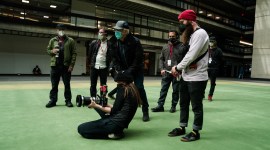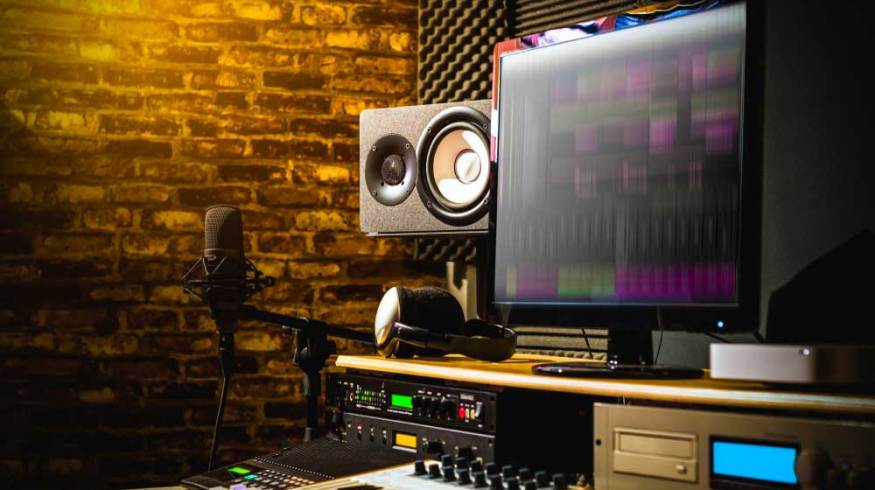
How Creatives Use Video Collaboration Apps During Lockdown
Even in times like these, the show must go on. Let’s have a look at the video collaboration apps that creatives use while working from home.
Previously, PremiumBeat explored a round-up of video collaboration apps for remote filmmakers. Since then, we’ve reached out to working creatives from Los Angeles and Seattle to Dallas, to understand the value such collaboration tools provided in normal conditions, and how it’s been key to getting the job done now. The ability to provide timely feedback and paste notes, paired with a solid and secure technical platform, are important components in choosing a solution. From speed to convenience, these apps below have proven their worth.
ProMax System
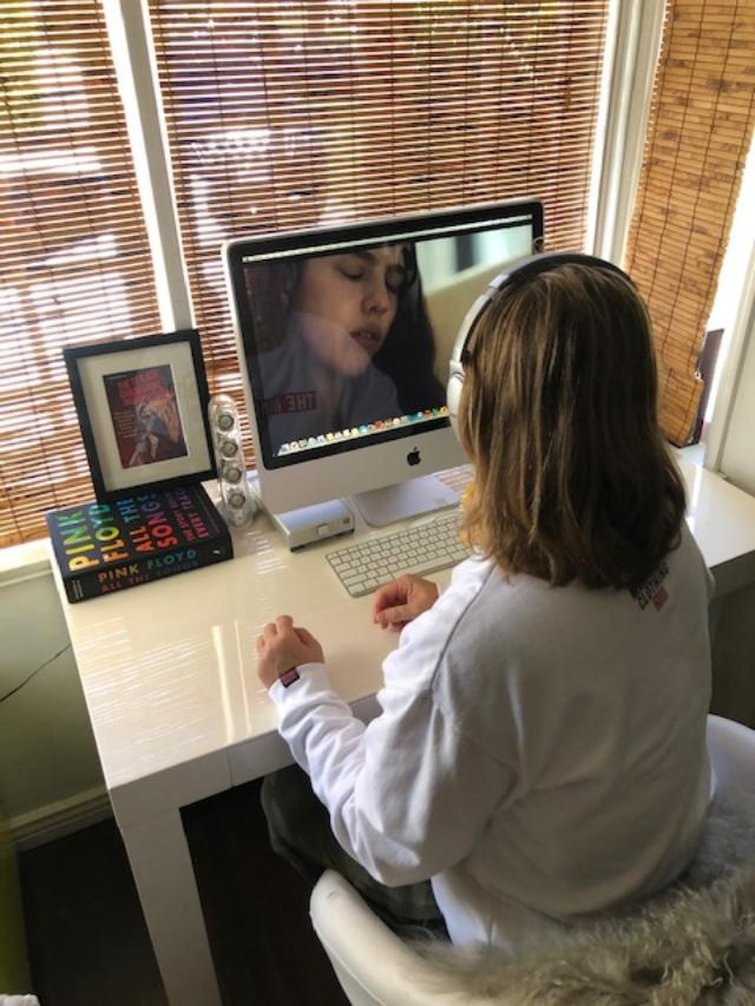
Using the ProMax System, Price can link up with associates from New York to view her edits in real time. Courtesy of Christina Price.
President and Senior Post Producer Christina Price of Bundle Productions and CFO of Bruiser LLC (based in Los Angeles) has had a long career working in post-production. Before the crisis, she had just begun to depend on various video collaboration apps with initial reluctance, but soon became a believer.
She had this to say about a recent experience with ProMax System at an editorial house in Culver City.
We linked up with the New York office so that the director in our east coast bay could simultaneously see what the editor was doing in LA. We were nervous there would be a slight delay (minimal by like twenty-four or forty-eight frames), but that never happened.
Our day would go like this: We dumped the project and sent it to NY digitally so the director could play with footage before we started our day on the west coast. Then, the NY assist would send those updated bins to our LA assist. The editor would review and then we’d throw the director up on speaker phone as they linked up with LA’s WIP picture. The director could collaborate in real time and see what the editor was doing at all times on the NY monitor. It was a simple set up and streamlined nicely.
With ProMax, you can edit in the field and submit large packages, even if the internet connectivity was a low bandwidth.
Whereas Price experienced using these apps with a team of support in the office, we wanted to get a perspective on the transition from the work office to the home office.
Kollaborate
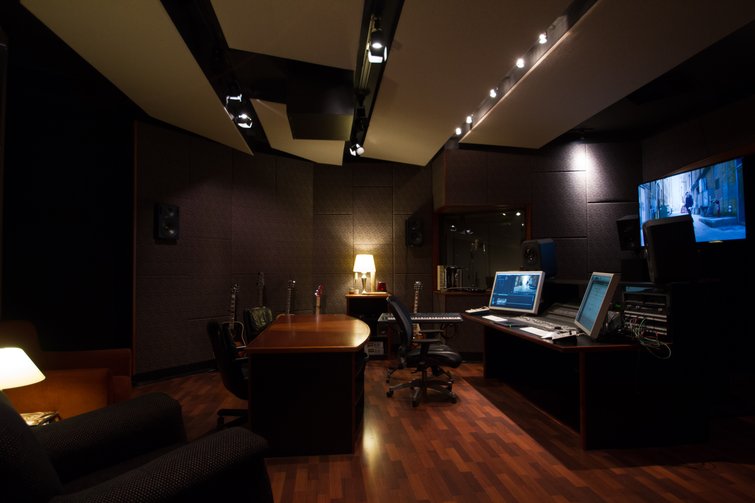
Kollaborate helps FreshMadeMedia keep a handle on their consistent workflow. Courtesy of FreshMadeMedia.
Seattle’s FreshMadeMedia is a production and post company based in Seattle. They make music, create graphics, edit commercials, and mix everything from ads to feature length films to VR ambisonic experiences.
PremiumBeat got the low-down from FreshMadeMedia’s Studio Director, Caleb Couch, on their use of Kollaborate and how it helped their workflow before and after the lockdown.
We’re a production and post studio in Seattle. We work mostly in advertising, doing editorial, audio-post, music, and motion-graphics work. We have three rooms, all set up to do the full range of post. We’ve taken great care to have our spaces fully-functional for all the different types of work that we do. One day we’ll be animating all day, and another we’ll be mixing a short film in surround, all in the same space. So, that’s been an interesting evolution. It’s definitely caused us to work at streamlining our setups. We have a toolset now that we’re very happy with! We’ve consolidated and simplified to spend significantly less time moving from one program (or room) to another, etc. We want to be able to pass projects around the team with ease and focus on what’s most important … being creative. The setup has to be powerful and it has to be efficient.
Kollaborate is a central tool for us. We use it for rounds of internal comment on project drafts, as well as client deliveries and feedback notes. We have a “Project” in Kollaborate called FreshWorks and every time we touch a project, we put up the latest draft into that folder. That way, everyone on the team can take a look and get up to speed or make comments, avoiding re-work or feedback that comes too late in the process. And, of course, client deliveries are much the same. We post, present, allow time for them to review and make comments on the web platform, etc. Digital Rebellion’s Kollaborate platform — with the web interface, Kollaborate Transfer, Cineplay for Mac & iOS, Cut Notes, etc. — all help us stay on top of project status across many clients, with many simultaneous deadlines.
The ability to have clients or colleagues comment directly on the frame they want to change is so helpful. No guessing about which scene we’re talking about “around thirteen seconds” and that kind of thing. We typically export the Kollaborate comments directly into Resolve, as we assign feedback to team members and refine to the next round. Timecode stays put all the way through. And, it’s nice to have the original notes available right in the timeline … Before Kollaborate, we spent so much time translating email notes into action items, spreadsheets, and all that. Yeesh. This cuts that whole step out. Definitely faster.
Also, the single format of the Kollaborate Transfer uploader is super helpful. It’s a fast transcoder, handles the upload directly to the project folder, and even sends the link — all right from the app.
One of our favorite features is the “Synced Sessions” in Kollaborate. The ability to review real-time in-sync with a remote team is awesome. We can play and stop, talk, continue, all on the “same page.” We’ve actually found some unique uses for this, too. We created a custom workflow to sync playback of our LIVE audio-mix sessions with Kollaborate Synced Sessions. We use it in conjunction with a high-quality audio feed via SourceNow to allow clients to listen and make mix-notes live against locked picture with no delay at all. (Unlike other systems that try to stream the video real-time, but have a lag time of nine-plus seconds. So, we hit play and immediately everyone is listening to the real-time mix updates. We’ve been doing that for a few years. But, it’s certainly especially relevant now!
In a lot of ways, since we’ve already been working in this way — reviewing via the Kollaborate platform — our workflow really hasn’t changed that much now that we’re outside of the studio. We had to work out some issues getting everyone set up in their home space — with the right machines and sync setups back to our main servers. But as far as flow, we’re really able to just keep on keepin’ on. Kollaborate is definitely part of that. We work. We post. We review and repeat. If we hadn’t been using it already, I think we’d certainly have a bigger hurdle taking the team remote.
Screenlight
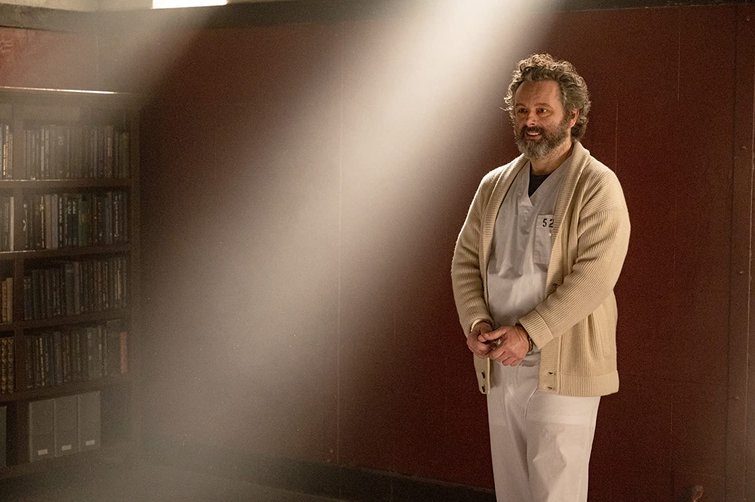
Screenlight is being used in collaborating for the crime series Prodigal Son. Image via Fox Network.
The team at FreshMadeMedia had been working with a collaboration system for years before they transitioned to working remotely, but many are finding this process a brave new world.
Prolific film and television composer, Nathanial Blume, is currently working on the Fox Network crime series Prodigal Son in Los Angeles. He hadn’t used a video app as part of the workflow until this lockdown and shared his recent experience using Screenlight.
The show just started using Screenlight during this lockdown. For the first part of the season, we would do spotting sessions in person. That’s definitely the best way to watch and share ideas, in real time. However, Screenlight has been a really nice alternative during this difficult time. While we don’t watch the episode together at the same time, we are able to leave comments, questions, and responses for each other. It allows for everyone to still feel connected. It’s a lot quicker than typing up an email when you can leave comments on the video timeline, exactly at the moment you want to address. The entire sound and music team use it together. So, the music supervisor can talk about the songs that have been selected or are yet to be selected, the sound supervisor can talk about what he’s going to cover in terms of sound FX, and I can share my thoughts about what the music can add. In the end, the show runners respond to each comment and we can have a discussion that way. It’s a very useful alternative to the norm.
Frame.io
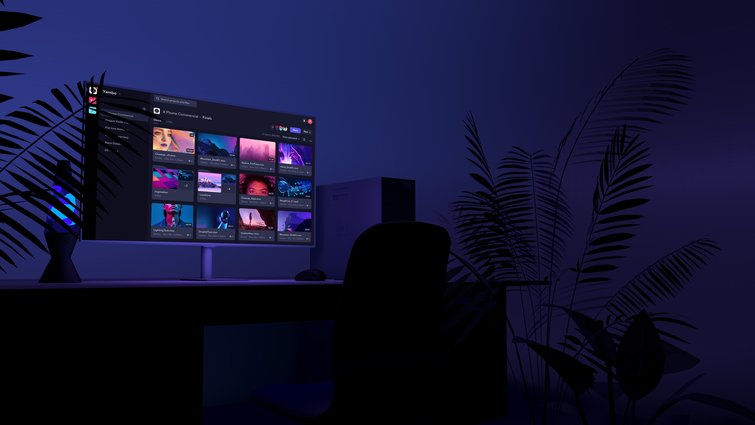
Frame.io provided a seamless transition from working in-office to working from home. Image via Frame.io.
At 900lbs in North Dallas — an interactive design agency — Video Editor Emmar Grant found Frame.io to be an invaluable resource to working remotely even when it was a work choice and not a national necessity.
I work at an experiential design agency, where there’s a great deal of overlap between design, software, and video philosophy. Many clients are stationed across the world, making it difficult to get them into my edit bay to collaborate. There’s a travel component to my work that sometimes demands editing on the road. Even my coworkers aren’t as connected with video culture, and I would have to arm wrestle them before I could get them to agree to creature comforts like a couch and a warm beverage. Design and software development methods make them more comfortable getting videos for comment electronically.
I create traditional and non-traditional video work, including surround video, 360 video, holograms, and projection maps. I work with clients as far away as Japan, and all across the United States.
Before Frame.io, we would send a video via Dropbox. The client would then type an email with timecodes for notes. This was madness. Timecode in a Dropbox link was never accurate — suggestions were very unclear. I would have to send a whole batch of my own questions back for clarity. And, for a client to have to hunt for timecodes made reviews much too difficult.
With Frame.io, they can link notes to the timeline easily, can draw on the video to communicate what kinds of changes they are after, and I can smoothly work through requests. I can check off the notes as I make my way through them.
Because we were already connected into the Frame.io ecosystem, our switch to a work from home platform during the novel coronavirus crisis was a very simple adjustment. I have the same schedule and work as usual. I haven’t been able to film very much for my job for now, but editing has been no different. The only adjustments have been location-based, but not work-based. The company setup for remote work was in place two years before we really needed it. It was seamless.
After gaining feedback from producers, editors, and composers, it’s clear that whatever role you play in the creative process, a clean and dependable way of communication and collaboration is key to a successful production.
Cover image via PrinceOfLove.
Continue reading about collaboration during the lockdown:




